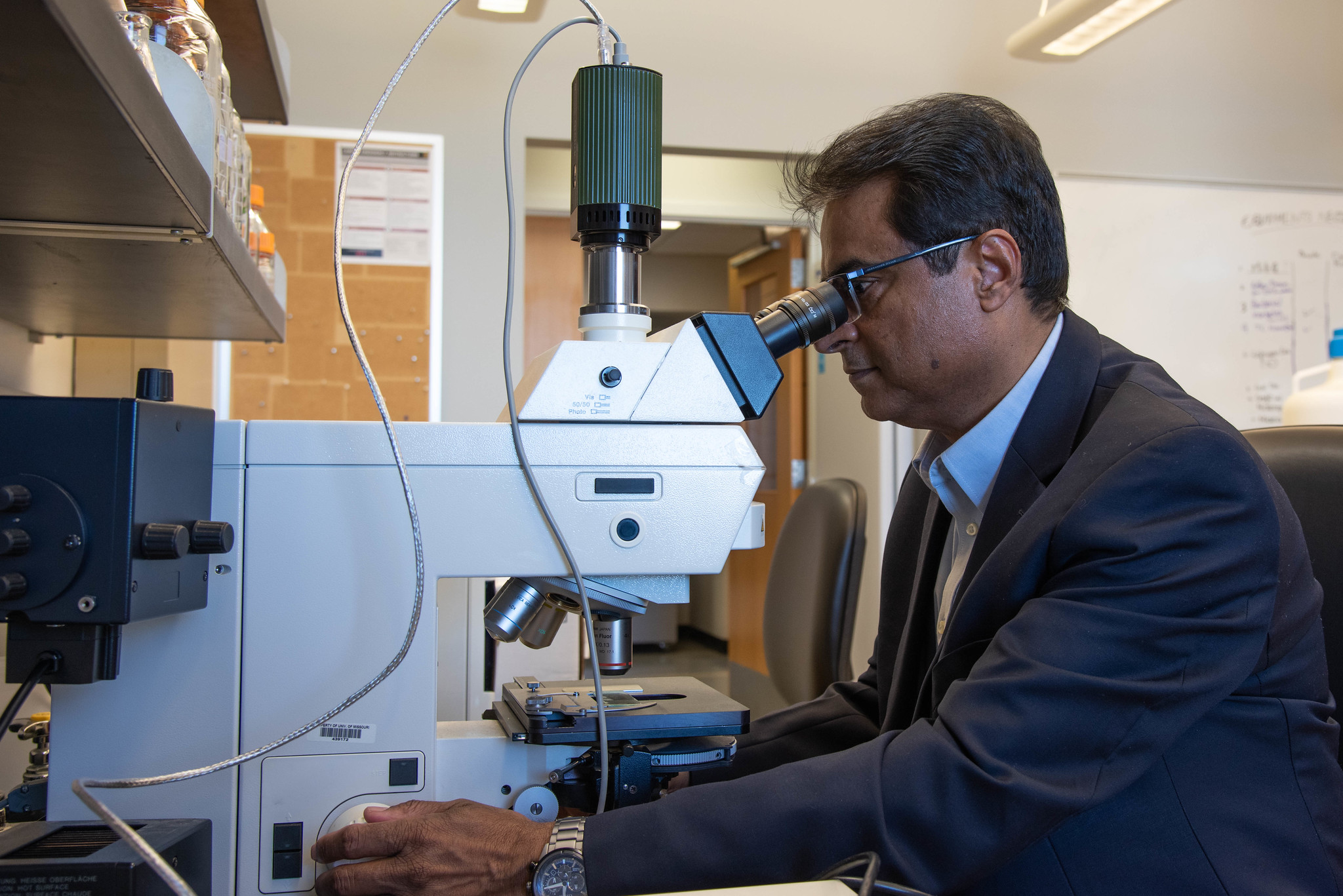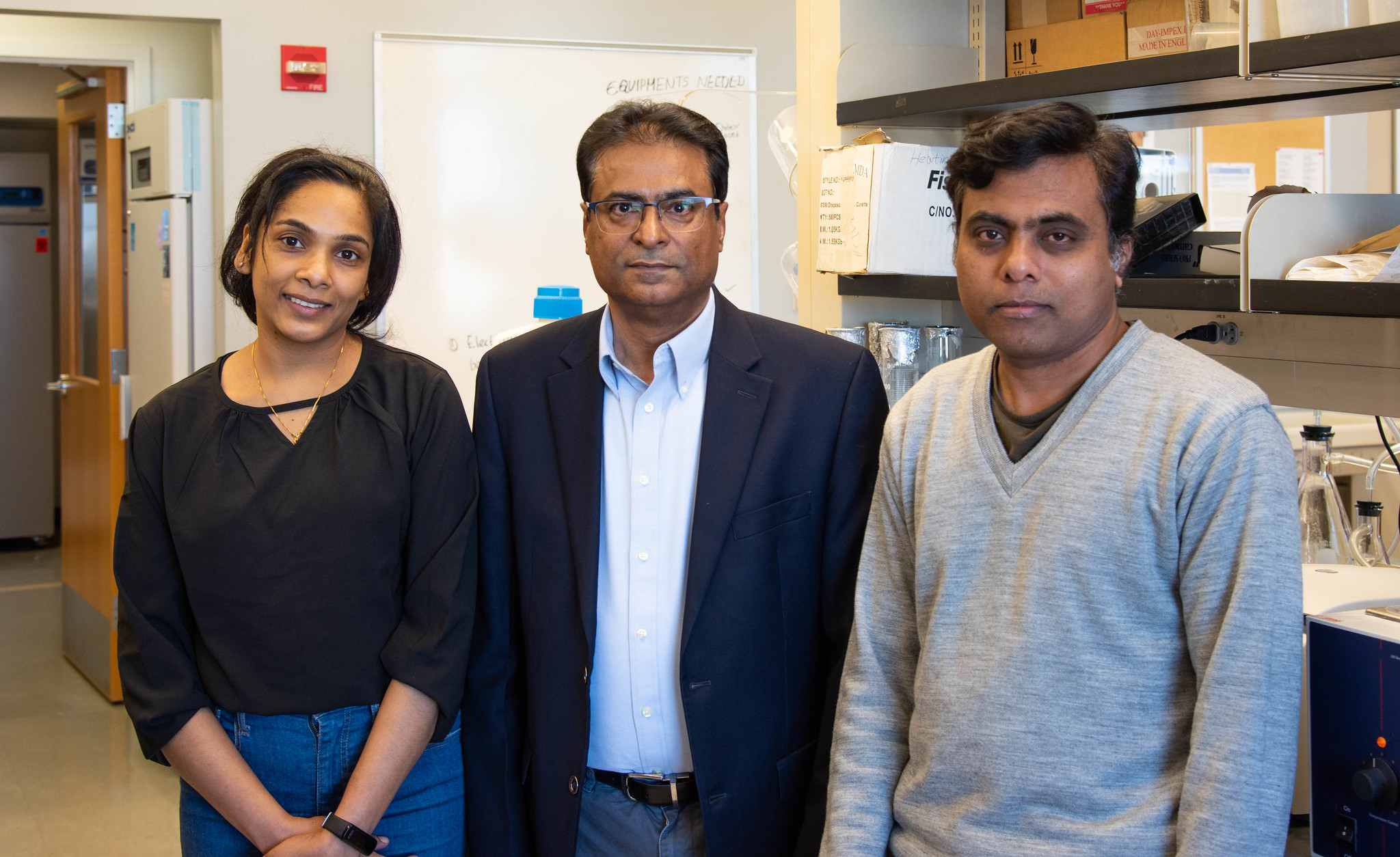Published on

By Josie Heimsoth | Bond LSC
Laxman Gangwani had a choice to make in January of last year. His old friend, Chris Lorson had an opportunity at MU that was difficult to pass up.
Gangwani and Lorson, principal investigator at Bond Life Sciences Center and professor of veterinary pathobiology, have known each other for more than 20 years while they were post-docs in different labs in Massachusetts. They would attend conferences for families with children diagnosed with spinal muscular atrophy across the United States, and thanks to a new opportunity to join MU’s faculty, they can collaborate and work on research projects together in the Midwest.
“It’s a small world,” Gangwani said.
Gangwani, a newly named professor of veterinary pathobiology, joined Bond LSC as part of Mizzou Forward, an effort to strengthen innovation in research and elevate Mizzou as one of the best research universities in the country.
Before coming to MU, Gangwani was a professor at Texas Tech for 12 years. He worked in the department of molecular and translational medicine. He ultimately decided that now was the time to try something new.
“I’m very excited to be here,” Gangwani said. “One of my motivations for coming here was to expand my research program. The facilities that I need are here, so I’m looking forward to it.”
Gangwani’s research program focuses on understanding the molecular basis neurodegeneration associated with the pathogenesis of motor neuron disorders — including spinal muscular atrophy (SMA), amyotrophic lateral sclerosis (Lou Gehrig’s Disease) and other neurological disorders such as Alzheimer’s disease (AD) and AD-related dementia (ADRD).

However, he wasn’t always involved in researching these neurodegenerative disorders. During his training as post-doc at UMass Medical School, he researched the zinc finger protein, ZPR1, a type of protein that communicates cell division signals from the cytoplasm to the nucleus and helps regulate the proliferation or division of cells. At the time, this protein was being investigated for its role in cancer because it engaged in binding and signaling messages from epidermal growth factor receptor (EGFR), which is mutated in cancer.
Back then, he looked for antibodies to detect and regulate ZPR1 activity to prevent it from helping create more cancer cells. To do so, they created mouse monoclonal antibodies to detect this protein in different species, including yeast, mice and humans. While looking through the different slides with each antibody clone, Gangwani discovered something intriguing.
“I found one slide, one clone, showing me very bright spots in the cell, just like Christmas lights,” Gangwani said. “I took some microscope photos and showed it to my postdoctoral supervisor, Dr. Roger Davis, and he said, ‘Well that’s fantastic! What is it?’ I had never seen anything like it.”
Gangwani noticed a similar phenomenon from another research paper involving the survival motor neuron (SMN) protein, which is mutated in SMA. This discovery was a turning point for him.
“We got a hold of spinal muscular atrophy (SMA) patient cells,” Gangwani said. “And I tested the ZPR1 and SMN interaction, which was disrupted in SMA. It was the most exciting find, so we published these findings in Nature Cell Biology, which was highlighted by News and Views. This was a turning point leading me to research in the field of neurosciences.”
Currently, his lab is looking into the function of ZPR1 and how it can cause nerves to break down. Gangwani discovered that ZPR1 interacts with survival motor neuron (SMN) proteins and found a mutation, SMN1, that disrupts the interaction of these proteins in patients with SMA. ZPR1 also interacts with a translation elongation factor (eEF1A), a contributor to protein synthesis on the ribosome. If it is disrupted, the latter protein complex will result in defects of cell growth.

Protein complexes play an important role in biological processes, and mutations of these complexes can cause different types of human genetic diseases ranging from cancer to neurodegenerative disorders.
Gangwani is also looking into how R-Loops, a three-stranded nucleic acid structure, contribute to neuron degeneration in SMA, ALS and other neurodegenerative diseases. Nucleic acids are chemical compounds serving as the primary information-carrying molecules in cells, also having an important role in protein synthesis. These disorders show dysregulation of R-loops and result in high or low levels of R-loops accumulation suggests that something is wrong.
“If the R-loops persist, that causes a stress on the DNA resulting in double-strand DNA breaks,” Gangwani said. “Cells normally have machinery that can repair DNA breaks, but if these loops keep accumulating and the cell is not able to either resolve R-loops or repair the DNA damage, the cell is eventually going to die.”
That is also the case for neuron cells. The defect in DNA repair results in neurons unable to repair damage, leading to genomic instability and the demise of the neuron in the patient. The cause is believed to be the interaction between ZPR1 and Senataxin, which helps at the interface of transcription and the DNA response damage. Gangwani found that removing ZPR1 and Senataxin accumulates the R-loop.
For Gangwani, his motivation and research are about helping children with SMA. He wants to be one of the scientists and clinicians that dedicate their efforts to help people with genetic diseases.
“If I could do something for these kids to help them live a better life, then I want to do it,” Gangwani said. “Since then, I have been involved with neurodegenerative disease research.”
Gangwani is now interested in figuring out the downstream targets and signaling mechanisms activated by the disruption of these protein complexes. If his lab is able to identify these molecular targets, it would help develop therapeutic strategies to prevent neurodegeneration and one day prevent some of these debilitating diseases.
MizzouForward is a transformative, $1.5 billion long-term investment strategy in the continued research excellence of the University of Missouri. Over 10 years, MizzouForward will use existing and new resources to recruit up to 150 new tenure and tenure-track faculty to address some of society’s greatest challenges. Investments also will enhance staff to support the research mission, build and upgrade research facilities and instruments, augment support for student academic success, and retain faculty and staff through additional salary support.